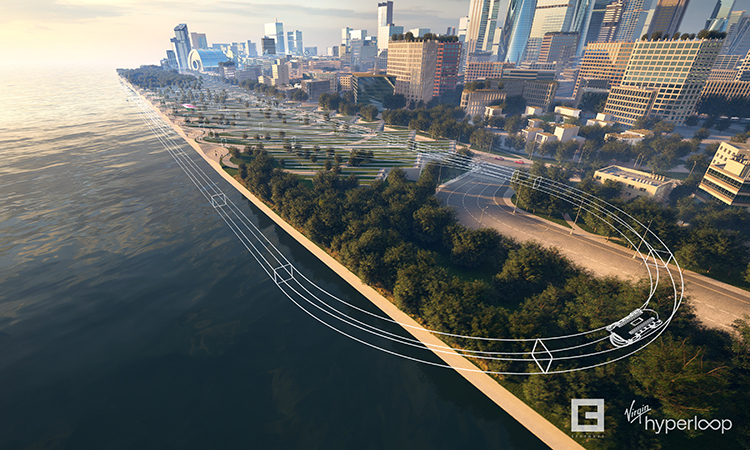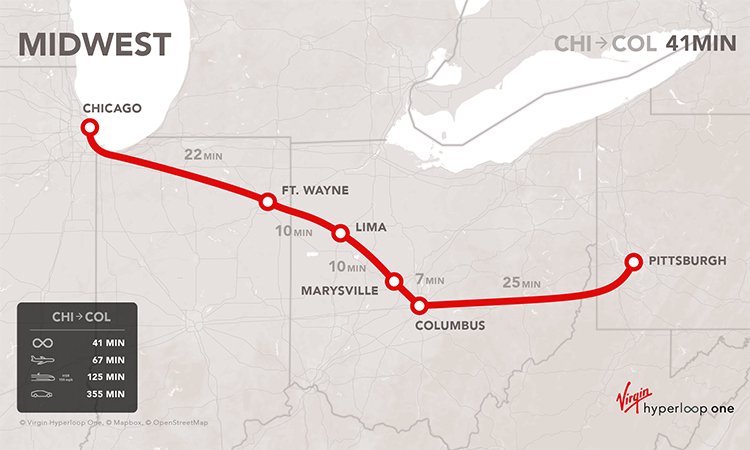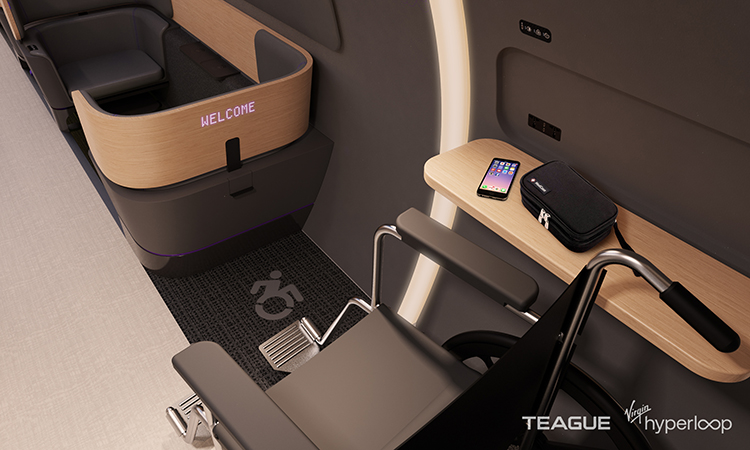Above and beyond: Virgin Hyperloop’s vision for passenger experience
- Like
- Digg
- Del
- Tumblr
- VKontakte
- Buffer
- Love This
- Odnoklassniki
- Meneame
- Blogger
- Amazon
- Yahoo Mail
- Gmail
- AOL
- Newsvine
- HackerNews
- Evernote
- MySpace
- Mail.ru
- Viadeo
- Line
- Comments
- Yummly
- SMS
- Viber
- Telegram
- Subscribe
- Skype
- Facebook Messenger
- Kakao
- LiveJournal
- Yammer
- Edgar
- Fintel
- Mix
- Instapaper
- Copy Link
Posted: 12 February 2021 | Sara Luchian | No comments yet
Director of Passenger Experience Sara Luchian outlines the exciting vision of Virgin Hyperloop, and explains why the ambitious project is very much focused on being a true mass transit solution.


Over the last few decades, we have seen innovation transform myriad fields: medicine, computing, entertainment, mobility. Yet even as technology brings the promise of safer, autonomous transportation, one important dimension has seemed to stagnate, its improvements incremental at best: the passenger experience.
Inconsistent WiFi, cramped seats, and service interruptions have become the expectation on mass transit, rather than the exception. Meanwhile, as more people move to cities and remain dismayingly reliant on their cars, we all spend more time idling on congested freeways, belching pollution and wasting time.
Virgin Hyperloop aims to change all of that. A new mode of super-fast mass transportation, hyperloop uses electric propulsion and magnetic levitation to move passenger vehicles (called “pods”) through low-pressure tubes. With no vehicle-to-track friction and ultra-low aerodynamic drag, these fully autonomous pods can glide at speeds of over 1,000km/h – connecting cities in minutes. But speed alone does not make travel a good experience; it merely gets us to the good experiences sooner.


The 350 mile journey between Chicago and Columbus could take just 40 minutes by Hyperloop
At Virgin Hyperloop, we have designed the entire system with comfort, safety, and ease in mind. With the push of a button, travellers will be able to reserve a seat on a pod going directly to their destination with all the speed – and less of the hassle – of airplane flight. Our pods are small and travel in convoys, and our proprietary switching technology enables individual vehicles to peel away from the group at high speeds, delivering occupants directly to their destination. These design choices give the entire system greater flexibility: to offer express trips, to respond quickly to changes in demand, and to drastically reduce waiting time.
Beyond the overall system benefits, however, we recognise how important it is to design the entire experience – from origin to destination, portal to pod – with intention. The physical layout of a station, for example, can have a meaningful impact on people’s perceptions. It can affect anxiety, comfort, even perceived wait time. What if every aspect of a traveller’s journey could be designed from scratch instead of relying on the status quo?
At Virgin Hyperloop, we take that opportunity seriously. Last month, we revealed our vision for passenger experience with a video that follows an illustrative journey from one city to another.
So many depictions of the future portray a dark, dystopian future, with stark lighting and ubiquitous screens. Our counter-narrative is a more optimistic view of the future: a greener, smoother, safer, and more pleasant mass transit experience. To that end, we propose a cabin with clean lines, warm tones, and organic touches. Information displays are nestled behind wooden finishes, revealed only when needed. Because technology should not be in your face, it should be in your service.
That principle has been at the core of our human-centered design work since I established the Passenger Experience function a year ago. Virgin Hyperloop attracts some of the foremost minds in engineering – but few of my colleagues have been encouraged to integrate empathy into their work. My privilege is also my constant challenge: to remind my co-creators that real people, some of them very unlike us, will one day ride in their ideas. Hyperloop is not exciting because of the technology, per se; it is exciting because of what that technology enables.
In short: a smooth, safe, even restorative ride… on a system that has the added benefit of exerting less stress on the environment as well.
That’s a vision that everyone should be able to share. Many current technological innovations have been advanced by billionaires with legacies to establish or preserve, and it is easy to wonder if they understand the needs of the average traveller. Though Virgin Hyperloop may seem at first glance to fall into a similar category, I can attest that we are committed to a true mass transit solution. Our vision fails – both ideologically and financially – if the average person cannot ride it.


Virgin Hyperloop says its pods will be comfortable places to be, as well as wheelchair friendly
That means, first and foremost, that hyperloop must be affordable. While exact fares will depend on the specific route, a feasibility study focused on the American Midwest concluded that the cost of a hyperloop ride would be equivalent to the cost of gas needed to drive that same distance. Accessibility also means making the hyperloop welcoming and comfortable for all. Our pod already offers accommodations for a wheelchair and we are working to expand our definition of accessibility. Families with children, people with hidden disabilities, and anyone with limited technical literacy all have different needs – to name just a few.
Of course, if these goals were easily attained, they’d already be widespread. But humanity has always striven for goals seemingly just out of reach – that is, after all, how we make progress. Virgin Hyperloop was founded by engineers in a garage just seven years ago. And three months ago, at our test site near Las Vegas, I joined one of those founders, Josh Giegel, as we became the first two people to ever ride in a hyperloop pod. It has been a remarkable journey indeed.
Following those successful tests, Virgin Hyperloop is paving the way for the regulation and certification of hyperloop systems around the world. Working alongside federal, state, and local governments around the world, our aim is to achieve safety certification by 2025, with commercial operations – such as those depicted in this video – beginning in 2030. By then, we will be long overdue for what the hyperloop will offer: mass transit that not only moves us faster, but better.
Biography
Sara Luchian leads the Passenger Experience function at Virgin Hyperloop. She established this function to drive research and design decisions that improve the safety, comfort, accessibility, and convenience of the hyperloop experience. Her prior experience at VH spanned initiatives related to business model definition, market research, product development planning, investor engagement, and strategic communications.
Prior to joining Virgin Hyperloop, Sara was a management consultant at the Boston Consulting (BCG) in New York City, where she advised both Fortune 500 and early- stage companies on corporate strategy.
Sara holds an MBA from the Wharton School at the University of Pennsylvania and a BA from Harvard University.
Related topics
Alternative Power, Infrastructure & Urban Planning, Passenger Accessibility, Passenger Experience, Sustainable Urban Transport
Related modes
Hyperloop
Related cities
USA
Related organisations
Virgin Hyperloop
Related people
Josh Giegel







